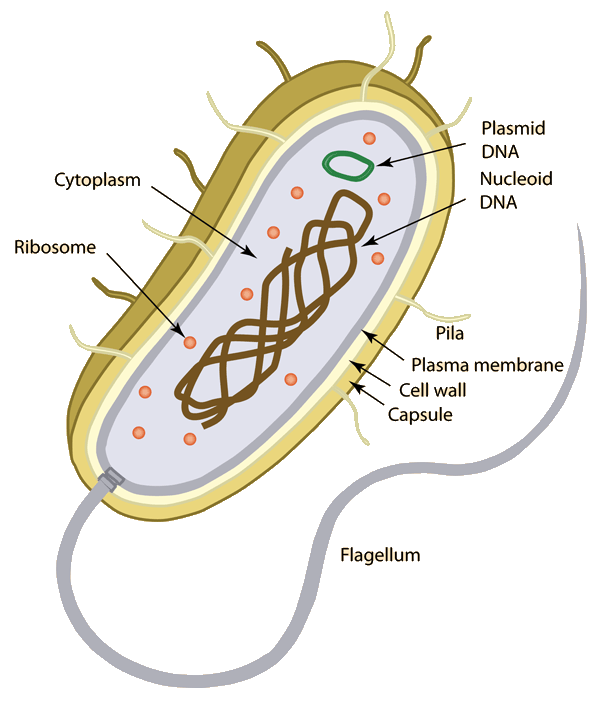Bacteria
Bacteria exist as single prokaryotic cells. The cells are very small, roughly the size of an animal mitochondrion (about 1-2μm in diameter and 10 μm long). Bacteria commonly occur in three major shapes: rod shaped, spherical, and spiral. Instead of going through elaborate replication processes like eukaryotes, bacterial cells divide by binary fission.
This general description of bacterial function was accessed at Thinkquest :"Bacteria perform many important functions on earth. They serve as decomposers, agents of fermentation, and play an important role in our own digestive system. Also, bacteria are involved in many nutrient cycles such as the nitrogen cycle, which restores nitrate into the soil for plants. Unlike eukaryotic cells that depend on oxygen for their metabolism, prokaryotic cells enjoy a diverse array of metabolic functions. For example, some bacteria use sulfur instead of oxygen in their metabolism."
Bacteria are incredibly varied, and incredibly abundant. To give some kind of organization to the multitude, bacteria are typically divided into four phyla: the cyanobacteria, spirochetes, gram-positive bacteria, and proteobacteria.
Cyanobacteria are photosynthetic, like plants, which means that they use the sun's energy to make food for themselves.
Spirochetes are gram-negative , spiral-shaped, and heterotrophic. Some of them live in the presence of oxygen, others don't. They may be parasitic, living symbiotically (where two organisms live off each other), or free-living. One type of spirochete causes syphilis.
Gram-positive bacteria are not all gram-positive, despite the same. They are grouped together due to other similarities. This phylum includes the strain of streptococcus bacteria that causes strep throat. It also includes the bacteria that produces yogurt, by growing and fermenting in milk (producing lactic acid). These bacteria also produce many of our antibiotics.
Proteobacteria is one of the largest phyla of all the bacteria. Many are gram-negative. They are divided into several subgroups, such as enteric bacteria, chemoautotrophs, and nitrogen-fixing bacteria. The enteric bacteria live mainly in intestinal tracts, like E. coli. The chemoautotrophs oxidize chemicals in minerals to obtain energy. The nitrogen-fixing bacteria are essential to many ecosystems - one type converts the unusable nitrogen in the atmosphere to ammonia, the form plants can use most easily.
This material on bacteria was largely taken from essortment)
|
Index
Reference
Audesirk & Audesirk
Ch 4
Reference
Hickman, Roberts, Larson
|
